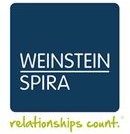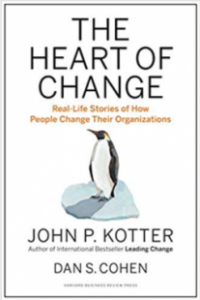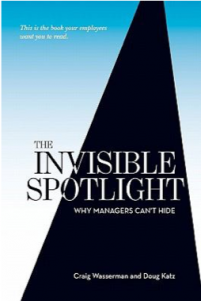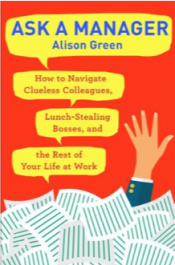With the lengthening of daylight hours, school being out and the hubbub of tax and year-end filing deadlines finally past, it’s the ideal time to plan your summer reading list. Perhaps you can even read alongside your school-aged children! Reading books about business strategy, leadership and change is a great way to take advantage of expert knowledge and hone your skills while relaxing by the pool or swinging in a hammock. The following is a short list that can be easily read over the next couple of months, without cutting into your other summer activities.
I know what you’re thinking, but reading about business-related topics does not have to be boring! The book recommendations below are not your new sleeping aid but are chock-full of valuable and implementable tips to improve your work-life.
Recommended Business Books
The following three books are meant for use by someone in any field but especially for those who are interested in becoming better leaders and more effective managers of both people and situations. I’ll share some of how each of these has impacted me and my effectiveness as an employee, which may give you some ideas on how you can implement what you have learned.
Death By Meeting: A Leadership Fable: by Patrick Lencioni
This conversational-style book is an easy read. The first half is written like a novel and presents issues caused by far too many meetings including breaking up the workday and harming productivity. The second half provides an analysis and helpful solutions to the issues presented in the first part. The author points out that time-consuming and broad-topic meetings (whether they’re needed or not), plus various other “targeted” meetings scheduled throughout the workweek, can start to look like “meeting for the sake of meeting” while not necessarily accomplishing the meeting’s intended goals. You will learn ways to make meetings more effective, reduce the frequency of meetings and find alternate ways to solve problems outside the conference room (leveraging email, etc.).
What I got from Death by Meeting is that preparation and sticking to the meeting agenda are key to getting key matters addressed. For formal meetings, I print out copies of the agenda for all attendees, and I encourage everyone to help us stay on track. Informal meetings are always related to a single, specific topic, and kept purposefully short, lasting no more than ten or fifteen minutes. I’m also careful not to schedule superfluous meetings or invite attendees whose presence isn’t required. That way, I don’t waste the time of my coworkers and clients. Instead, we seek other strategic ways to accomplish goals through collaboration with a few individuals; thereby, minimizing interruptions to the daily workflow. I’ve gotten very good at keeping notes and putting items into a “parking lot” to address at the end of the meeting. Even when I contact friends or family, I try to get right to the point on phone calls in general or when making plans for specific events. It really boils down to respecting other people’s time.
The Heart of Change: Real-Life Stories of How People Change Their Organizations – by John P Kotter
This intriguing book takes you beyond the traditional view of change as a thing that people are compelled to do into the realm of achieving buy-in to internalize the change and integrate the change more seamlessly. It focuses on the experiences of actual companies as they went through a change in organizational structure, corporate culture and the like within their enterprise. Emphasis is placed on the importance of buy-in for successful implementation of change, and how to get employees and teams on board with upcoming changes. Practical tips for managing that change are also included. It’s particularly relevant to people working for companies where continual improvement is a high priority, as change and innovation are highly encouraged and rewarded in such environments. The subject is timeless; change is constant, an ongoing fact in business, personal life and the world.
The Heart of Change made a big impression on me, increasing my awareness of how change impacts my everyday life…from sweeping new company policies and procedures, down to minor modifications in my morning routine when getting ready for work. It also helped me to understand the psychology behind change-resistance and change-acceptance, which I use when speaking about changes with people. Within the auditing process, my team reassesses what we’re doing for the client every year based on economic and other business-critical changes, and I have become more mindful of how to adapt and be a stronger model to my team members, stressing that we can’t just do what we did last year and hope it still works. Additionally, I can consider how a client’s changes in business and operations might have impacted their team. This helps me anticipate questions they may have for us that may not have been relevant last year. Overall, it taught me to be flexible and open to change, since there’s no way to avoid it; sooner or later something will change—whether you like it or not.
The Invisible Spotlight: Why Managers Can’t Hide – by Craig Wasserman and Doug Katz
This invaluable book, written by two experienced business consultants, is a must-read for managers at every level who wish to build positive (enlightened) management relationships. If you have staff reporting to you, your words and actions matter to them in ways you may not realize in each given moment. It really is as if a hidden spotlight is constantly on managers, supervisors and especially the C-Suite since the tone of a team and an entire company is set at the top. The ranks will follow by example, or role modeling, as it is an ingrained part of human nature to learn acceptable behavior by observation. Taking it one step further, people tend to read into what’s said and not said. The book sheds light on successes as well as missteps of managers, leading readers toward self-reflection, examining and improving their own management style.
When I accepted the role of audit senior at Weinstein Spira, I knew I would have people reporting to me in auditing engagements. This book helped me to grasp how much my behavior would impact the people working with me. From time to time, I’ll revisit certain sections that address what I consider to be the most important in my day-to-day interactions with my coworkers, just to make sure I’m self-aware of the signals I’m sending. When onsite at a client company, my behavior, and that of my team, represents the entire firm! Therefore, it’s important to have a professional demeanor and definitely remember the impact of spoken words…not only with respect to my staff, but clients as well. This book made me realize I am center stage virtually all the time! It’s not my favorite spot to be, and it made me uncomfortable to realize that I was there. That discomfort added to my motivation to be the best representation to my staff and my clients that I can be. In addition to leadership awareness, these principles have affected other areas of work that involve communication and perception, including careful review of emails before clicking send, to make sure my written words strike the right business tone and will not be misconstrued.
Perhaps you don’t have time for a book, or prefer your managing lessons in smaller, bite-sized sessions? There are many blogs and podcasts that help fine-tune your business acumen. One website that I find useful is called “Ask A Manager,” published online by Allison Green. She even has podcasts, for the reading-averse, or those on a long car trip. Her blog posts address many of the same topics covered in my recommended books, giving advice to people working in different sorts of business cultures on how to tackle tough workplace situations. It’s virtually a “Dear Abby” column for business. Allison also holds a Q&A session in her weekly podcasts, to which you can subscribe. Like her style? She, too, offers business-related book recommendations for continued reading (including her own book, called Ask a Manager). Click on this link to explore her site: www.askamanager.org.







